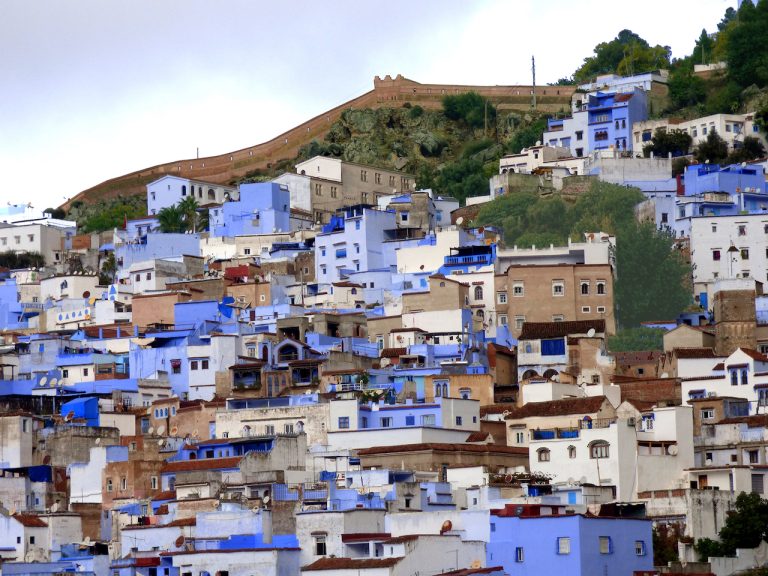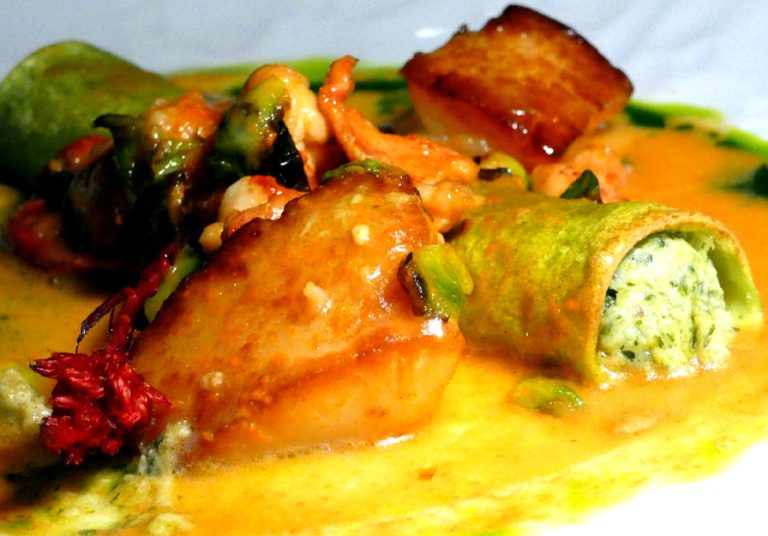Reposted with permission from LuxuryWeb.com.
Chefchaouen, Morocco is one of the most vibrant and beautiful towns in a country overflowing with picturesque cities and villages. Savvy tourists come from all over the world to visit and take pictures of this charming hill town located virtually in the middle of nowhere. Chinese tourists, in particular, seemed to be enchanted and could be seen seeking it out in groups.
Secluded in mountains that can only be reached by a precipitous winding road, Chefchaouen’s central square now has numerous restaurants catering to Chinese visitors.
My first glimpse of the sparkling blue city, known as Morocco’s “Blue Pearl,” was from a distance when we stopped to take photographs. But I soon found that the full impact of the city’s “blueness” does not truly hit until you enter the city gates and get your first close-up look at stunning Chefchaouen.
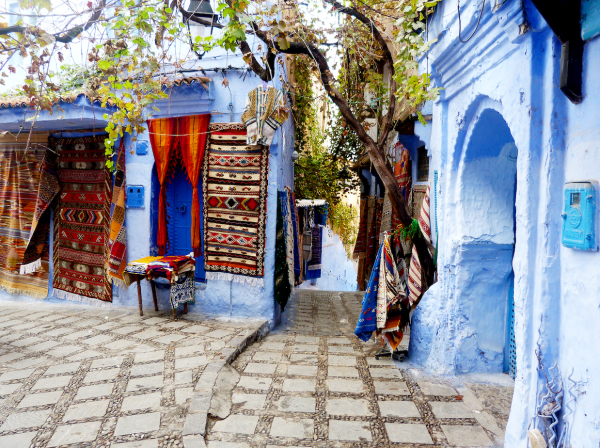
In the 14th Century the village barely consisted of eight or 10 houses occupied by Imazighen people — translation “free men” — more commonly referred to as Berbers. In the Berber language the name “chef” translates to look and “chaouen” to horns and reflects the geological position of the city set into the hillside between two prominent mountains of Northern Morocco’s Rif chain.
Ancient architecture
Success
You are now signed up for our newsletter
Success
Check your email to complete sign up
The symmetry of the buildings in the city dates back to the 1471 hostilities between Morocco and Portugal, when the Sultan of Morocco turned Chefchaouen into a military installation and fortification against possible Portuguese incursions. He sent troupes to the area and structures were built to garrison them — these dwellings are miraculously still standing and are now the houses and shops that constitute the town.
It wasn’t until the expulsion of the Jewish and Muslim populations from Spain in 1492, and the massive influx of emigrants into Morocco, that the village of Chefchaouen was expanded to give them sanctuary. Due to the shared experiences of the two religious groups, they continued to live and work together side by side as they had done for generations on the Iberian Peninsula.
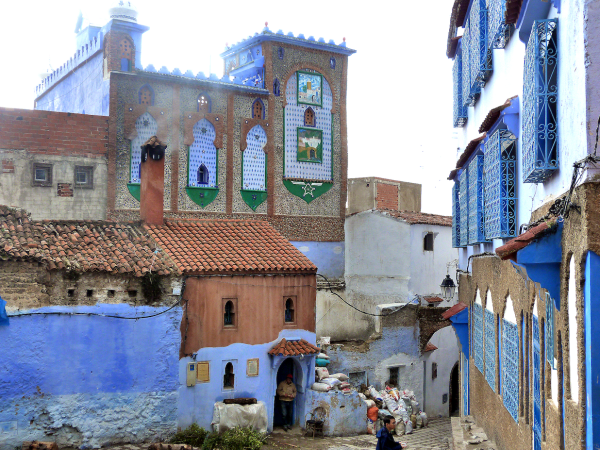
The small existing Berber presence integrated with the incoming populations — many converted to Judaism or Islam attracted by the concept of the One God practiced by both religions — and for hundreds of years the three groups co-existed in peace and prosperity.
Originally all the houses were constructed of the same tan colored earthen bricks. According to our guide Youssaf Shu, a lifelong resident of Chefchaouen, the Jewish population began painting the bottom half of their houses blue either to remember the sunny skies of their homes in Spain’s Andalusia… or to “symbolize divinity, because blue is the color of the sky and sea”… whatever version is correct, the delightful outcome is the same.
Muslim residents responded by painting their houses white, the color of Islam. Initially the paint covered as high as the house’s occupant could comfortably reach, and as the people were not very tall, only the bottom half of the houses were painted.
As generations ticked by, populations grew, and services expanded, homes were designated by rounded or arched doors while shops were entered into though a square door. As you meander around the streets today it’s easy to pick out the shops with their opened square doors inviting tourists to “take a look” at their original and mostly hand-crafted souvenirs for sale. Venders also line the alleyways with treasures and treats to purchase and take home to remember this special city.
A charming town
At some point in the late 20th century an enterprising resident — no doubt to show off his wealth or just for the fun of it — painted his entire house blue and additionally, decorated it with flowers. The house got so much attention; people even came from surrounding villages to marvel at the beautiful blue house.
This initiated a friendly competition for attention by village residents and by happenstance sparked the birth of tourism to Chefchaouen. By 1994 blue had became the official color of Chefchaouen and although there is no longer a Jewish population living there, every year when the houses are cleaned in preparation before the Muslim Holiday of Ramadan, the women of the town repaint their houses in the shade of blue that is popular, or most available, that year. This mixing of colors contributes to the various shades of blue, oftentimes even on the same house, that makes the town so appealing.
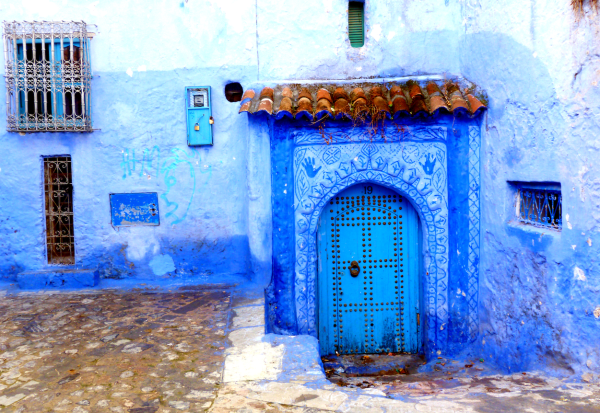
Wandering through the town and peering up and down the alleyways veering off the main street is a photo-op, bar none. I took dozens of pictures because around each corner a new must-have visual caught my eye. But, I was not the only one pointing out picture-perfect views; all around me were groups of Asian tourists with cameras pressed to their faces clicking away, as enthralled as I was.
Periodically, I would stop to shop for souvenirs at one of the many stores lining the streets offering unusual items or better prices than the competition. Eventually, we had to leave this charming town which was probably a good thing as my camera was running out of memory and my pocketbook was running out of funds.
For more information on Chefchaouen and other captivating sites, visit the Moroccan National Tourist Board at visitmorocco.com
Visit LuxuryWeb.com to see the original article and more.



